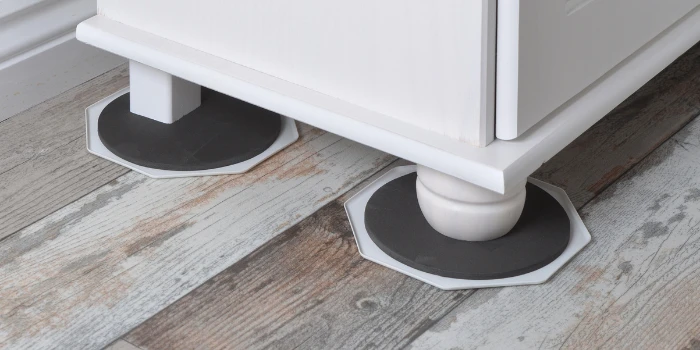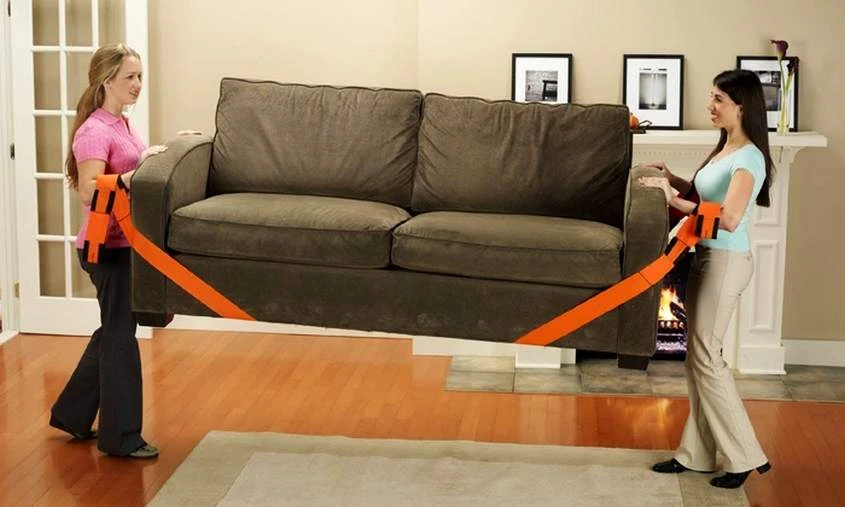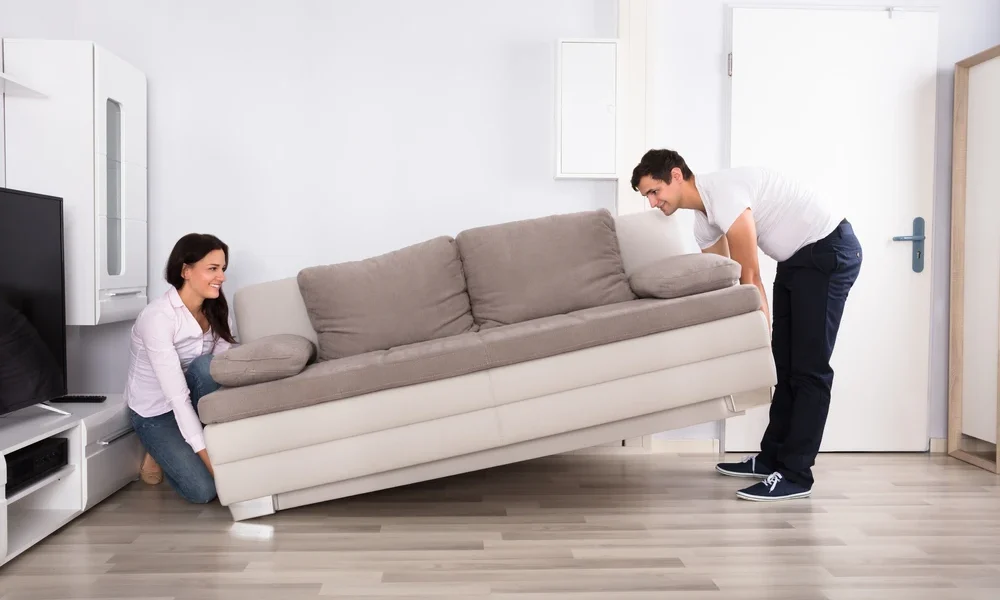Moving heavy furniture can seem daunting, but it becomes a manageable task with the right approach. A good way to determine your items’ weight and size is to weigh and measure them. This knowledge helps you decide whether to tackle the job alone or enlist help.
Choosing appropriate tools not only makes moving easier but also protects both your furniture and floors from damage. Preparing your space by clearing obstacles ensures a smoother transition for bulky pieces. Utilizing proper techniques minimizes strain on your body while maximizing efficiency. Always keep safety in mind; wearing gloves and sturdy shoes can prevent accidents that could lead to injury.
Importance of Properly Moving Heavy Furniture

Moving heavy furniture improperly can lead to serious damage, not just to the items but also to your floors and walls. Scratched surfaces or dented corners are frustrating reminders of a hasty move.
Injuries are another major concern. Lifting without proper technique can strain muscles or cause more severe injuries. A little caution goes a long way in protecting both your possessions and your body.
Taking the time to move furniture correctly means less hassle later on. Maintaining an organized space is easier when everything is positioned thoughtfully from the start. Proper moving techniques contribute to a positive moving experience overall. Handling your belongings with care fosters a sense of respect for them, making every step smoother as you settle into your new space.
Weighing and sizing the furniture
Before moving heavy furniture, it’s essential to assess its weight and size. Knowing these details can save you from potential injuries and damage. Identify the height, width, and depth of the item. This helps determine how much space you’ll need while maneuvering it through doorways or around corners.
Solid wood pieces are heavier than those made from lighter materials like particle board or metal. If possible, check for any labels that indicate weight. If you’re trying to move a large but light piece in a confined space, consider that it’s bulky.
Choosing the Right Tools and Equipment

When moving heavy furniture, having the right tools can make all the difference. A sturdy hand truck or dolly is a good place to start. These devices are designed to bear weight and reduce strain on your body. Furniture sliders are another fantastic option. Place them under the legs of sofas or tables. They allow for smooth gliding across floors without causing damage.
They distribute weight evenly, making lifting and maneuvering bulky items easier. If you’re dealing with large pieces, consider renting a hoist or winch. This equipment can help elevate furniture while you navigate tight spaces. Always check local rental stores or online platforms for availability.
Preparing the Area for Moving
Before moving heavy furniture, take a moment to prepare the area. Clear out any obstacles in your path. This includes rugs, small furniture, and decorative items that could trip you up.
Taking the room layout into account is the next step. Visualize where each piece will go after it’s moved. This planning can save time and effort later on. Remove protective coverings to prevent scratches if you’re working on hardwood or tile floors. Old blankets or cardboard can work wonders here.
Measure your furniture and doors to ensure a smooth passage without getting stuck. Enlist help if needed. Having an extra set of hands makes all the difference when maneuvering through tight spaces or around corners.
Techniques for Moving Heavy Furniture

Using the right techniques can make all the difference when moving heavy furniture. Start by planning your route. Clear any obstacles that might hinder your progress. Use proper lifting techniques to avoid injury. Bend at the knees and keep your back straight when picking up items. This helps distribute weight evenly and protects your spine.
Another effective method is to push rather than pull whenever possible. Pushing reduces strain on your body and gives you better control over the object’s movement. Leverage tools like sliders or dollies for added support—place sliders under the legs or corners of furniture to easily glide them across surfaces.
If you’re maneuvering through tight spaces, consider tilting the furniture slightly. It allows for easier navigation without damaging walls or door frames. These simple techniques can transform a daunting task into a manageable one.
Safety Tips to Keep in Mind
When moving heavy furniture, safety should be your top priority. Always wear appropriate clothing and sturdy shoes with good grip. This simple choice can prevent slips or injuries. Make sure to lift properly. Your back should remain straight as you bend at the knees. Avoid straining your back by lifting with your legs instead.
Clear the path ahead of obstacles, like small items or rugs that could cause you to trip. A clutter-free environment helps maintain focus while maneuvering large objects. If possible, enlist help for larger pieces. Having an extra set of hands makes the process easier and reduces the chance of injury.
Alternative Options for Moving Heavy Furniture

If moving heavy furniture feels daunting, consider hiring professional movers. Bulky items are handled safely by them because they have the expertise and equipment needed.
Another option is to rent a dolly or furniture sliders. These tools can make maneuvering large pieces much easier. Slide them under the legs of your couch or dresser for smooth transport across floors.
Organizing a mini-move day can be effective for those with friends willing to help. Just ensure everyone understands their roles and follows safety precautions to prevent injuries. Some companies offer specialized services for seniors or individuals with disabilities who may need extra assistance relocating heavy items. If you have a piece that isn’t working for your new space, sell it online to buy something lighter that will work better.




